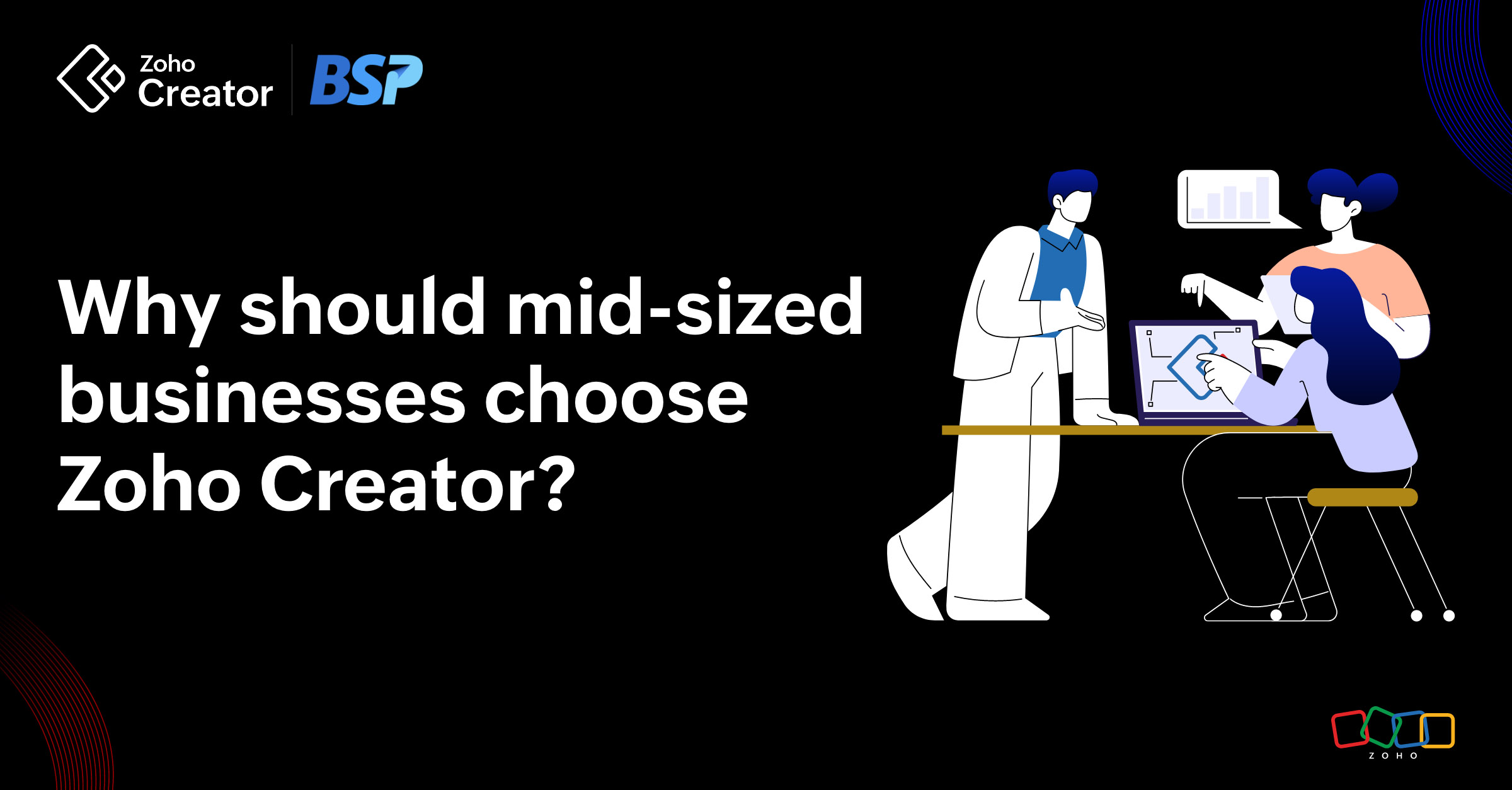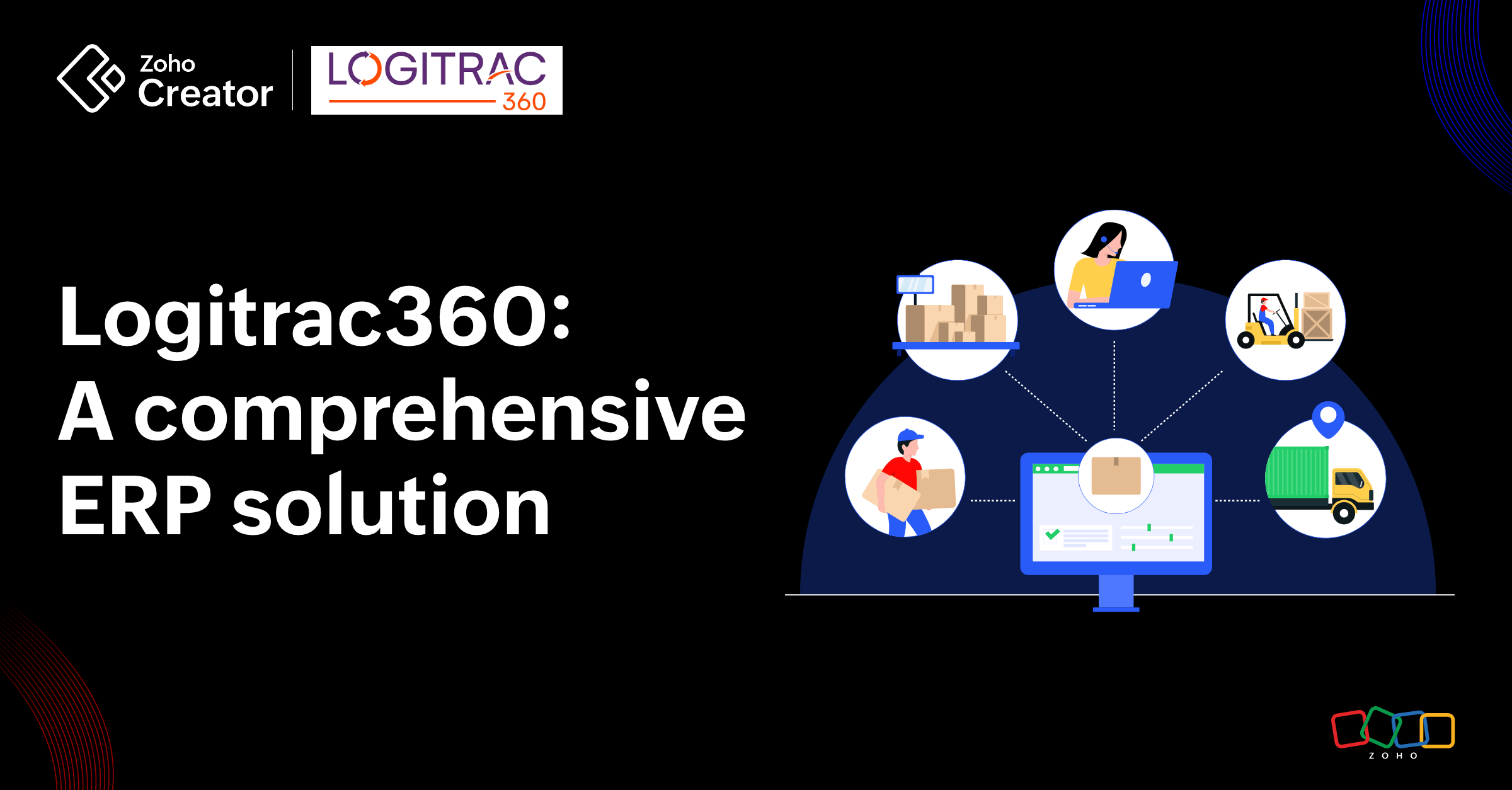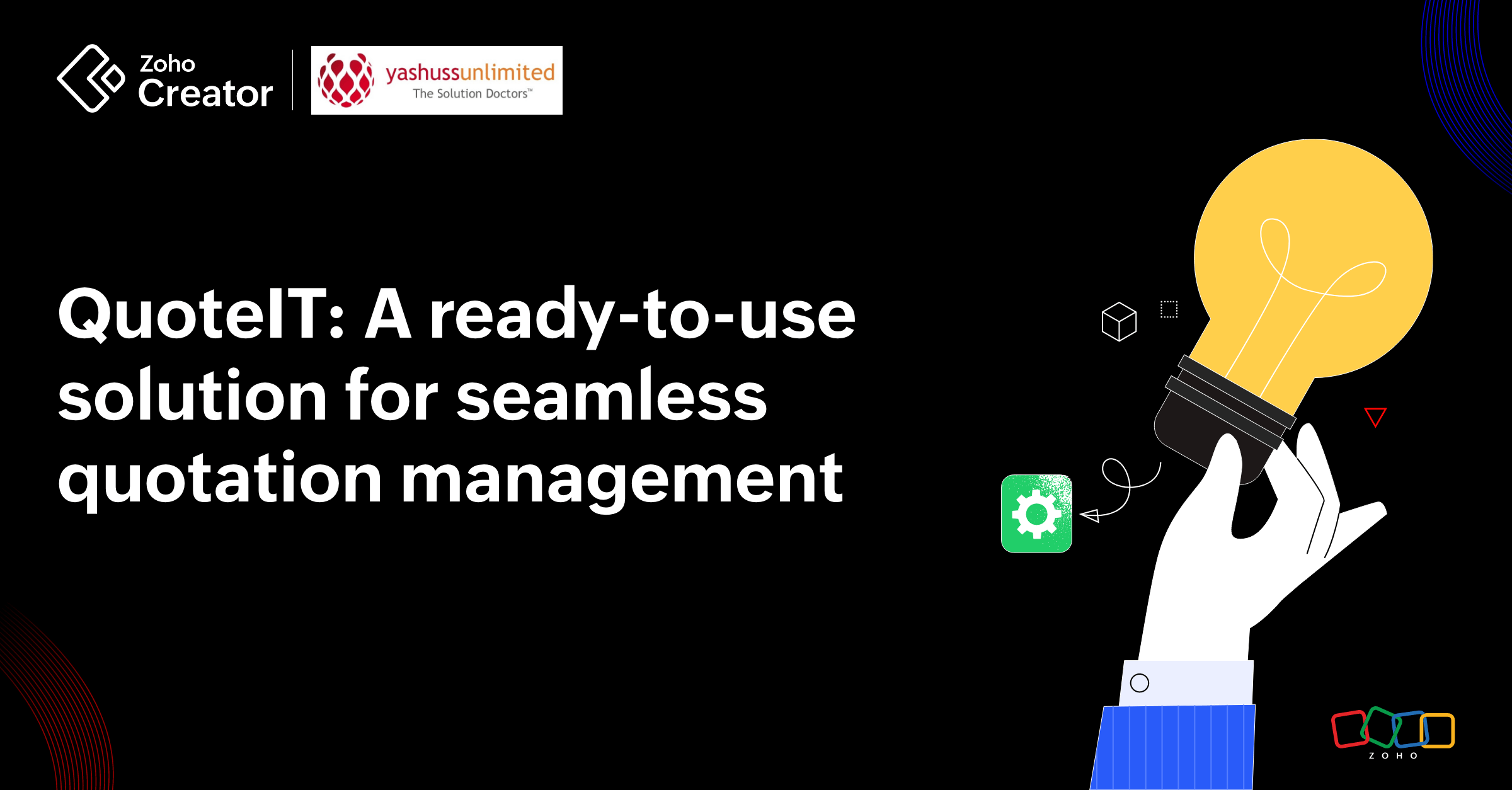- HOME
- Create Your Way
- Can you build a custom logistics app without using any code? Yes, and here’s how.
Can you build a custom logistics app without using any code? Yes, and here’s how.
- Last Updated : November 18, 2025
- 6.2K Views
- 6 Min Read
The logistics industry is more than just fleet management. It’s a massive umbrella that covers warehouses, vehicle tracking and booking, driver monitoring, payments, status updates, notifications, and much more. The more you think about it, the more you’ll realize that the current app you’re using doesn’t cover them all. Perhaps you’re using five specific apps for five different functionalities. But do they flawlessly interact with each other?
We didn’t think so.
And the reason? These apps aren’t designed to fit your business. Your business is instead morphing to fit their limitations.
Why should you consider building your own logistics app?
Everything in one place: A transporter has different needs than a large-scale retailer offering deliveries. No matter which category you’re in, you can have all the elements you need in a single app.
Just the features you need: Some businesses rent out their vehicles. Most don’t. If you build your own custom app, it’ll have the features you use and none of the ones you don’t. It makes everyday work easier and saves money you’d otherwise spend on a store-bought logistics system.
Flows the way you work: With readymade software, you have to fit your processes and workflows into their set model. With a custom app, however, you get to build a model around your existing workflows. You compromise nothing.
Expand when you want to: With a custom app, you can start slow and small, and add functionality as you grow. Pay for only what you use, when you use it. You don’t have to buy unnecessary software packages with extra features.
Speaks the language: A “lorry” to you could be a “truck” to someone else. From the way you refer to employees to the way you differentiate suppliers and stakeholders, you’re in control of every detail.
Sounds good, doesn’t it?
But we know what you’re thinking. Building your own app is difficult and time consuming, right?
Only if you do it the old fashioned way. Traditional app development requires a lot of:
Server space – An app is a large database, and at such great scale, you need lots of physical space to accommodate your servers.
Maintenance – With large servers come large responsibilities. Not only do you have to buy new hardware to rectify any issues but you also need to regularly run maintenance checks to prevent mishaps.
Technical know-how – An app is tied to a device, and building apps for each device requires specialized knowledge of each platform. For example, web apps are powered by languages like JavaScript and Python, whereas iOS apps are powered by Swift. Android largely runs on Java.
Money – Aside from finding the right developers to build apps for each platform, you also need to allocate individual budgets for every device. This includes initial development, deployment, and lifelong maintenance of your app.
It’s just not an attractive option to consider.
But hang on—
What if you could use a fairly new technology to build cloud-based apps without all the programming?
Low-code technology
Zoho Creator is an all-in-one platform—easy to use, entirely online, and very affordable. And the best part? You can start building your custom logistics app on Zoho Creator today.
Here’s how you do it.
The 5-step guide to building a custom logistics app on Zoho Creator
The first thing you need to do before building any kind of app is to identify the basic elements or features you’ll need. In this case:
A complete database of your vehicles, drivers, vendors, warehouses, customers, and employees
An admin panel to track shipments in real time, including aspects like barcode scanning and geo tagging
A form or a mobile app for drivers to update their statuses
Automated accounting systems that generate quotes and record taxes, surcharges, and other expenses
A dashboard that displays key metrics like order details, pending orders, income by trip, monthly revenue, inventory status, and fuel efficiency
Now let’s look at how we can incorporate these features into an app.
Step 1: Create forms to maintain a database of warehouses
The best thing about Zoho Creator is how easy it is to navigate.
A drag-and-drop interface lets you build forms with ready-to-use fields. For example, you can add primary ones like location, name, and address, but you can also add other fields as required, like pictures of the warehouse, its capacity and size specifications, and the manager in charge.
What’s more, if you already have a spreadsheet with all this data, you can upload it right into Zoho Creator and skip the drag-and-drop process.
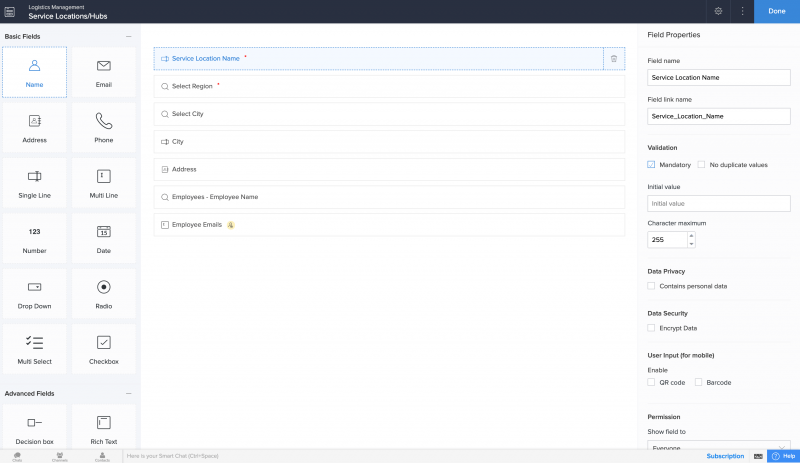
To enable geolocation tracking of your warehouses, go to the Field Properties section on the right hand side of the form builder.
Step 2: Create forms to collect vehicle data, and allow drivers and employees to fill in their information
As in the previous step, you just drag and drop fields to gather details like vehicle model and make, model year, insurance details, permits and numbers, associated drivers, and more.
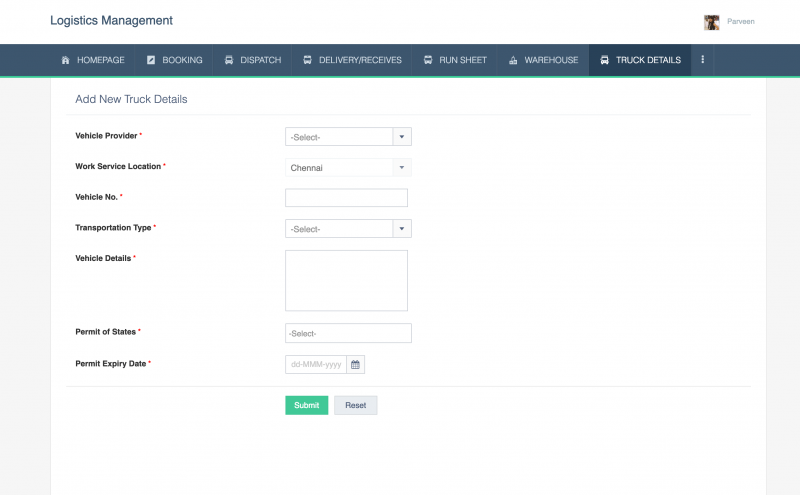 Similarly, you can create forms for drivers, employees, and if necessary, your suppliers and other third-party vendors.
Similarly, you can create forms for drivers, employees, and if necessary, your suppliers and other third-party vendors.
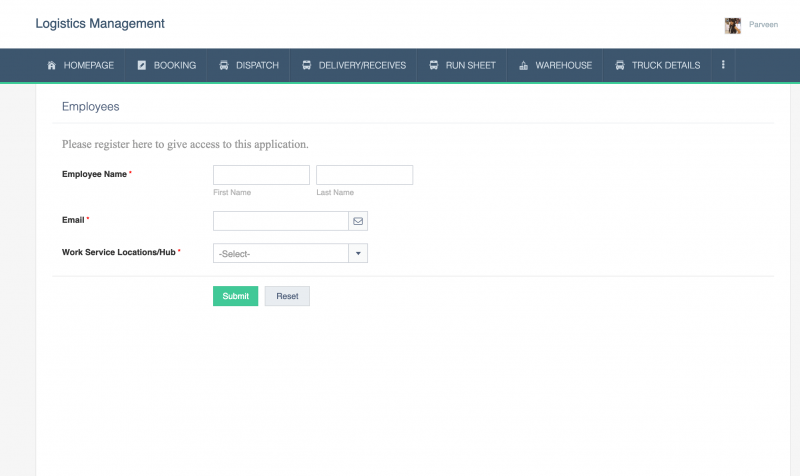 Step 3: Create a booking system to manage shipment delivery schedules
Step 3: Create a booking system to manage shipment delivery schedules
A booking system refers to yet another form in Zoho Creator. Use fields like auto number, date and time, notes, and integration to set up a scheduling page with payment gateways, too, if you prefer.
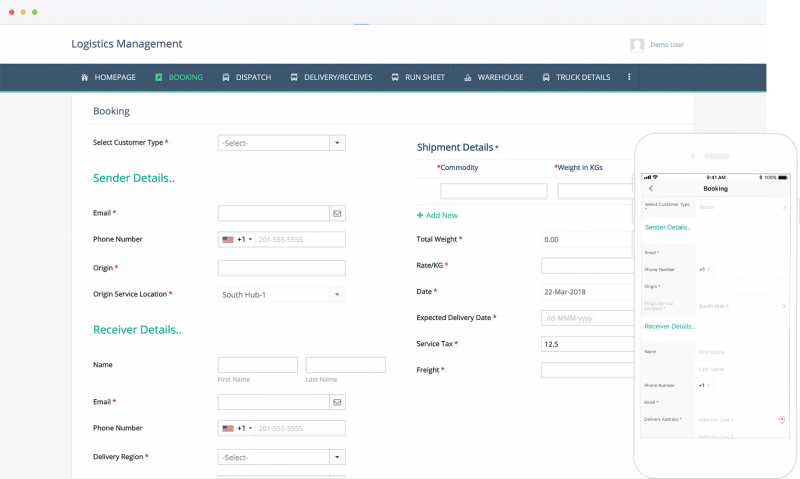 Whenever you submit the form, all that data is automatically captured in a default list report. You can modify it to view them as a calendar—your scheduling calendar—and edit, manipulate, and share with others as necessary.
Whenever you submit the form, all that data is automatically captured in a default list report. You can modify it to view them as a calendar—your scheduling calendar—and edit, manipulate, and share with others as necessary.
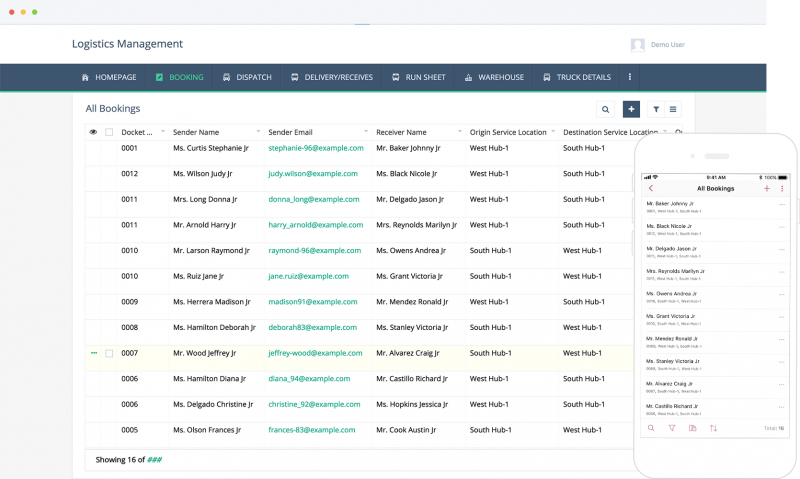 Step 4: Configure notifications to track shipments
Step 4: Configure notifications to track shipments
Once you have all your forms, you’re ready to tie them together with workflows. Zoho Creator lets you design most workflows using a drag-and-drop interface. However, based on how complex you want your app to be, you can add additional functionality using prebuilt blocks of code and Deluge, our English-like scripting language.
On the scheduling form, create a workflow to run as soon as a record is added (as soon as the form is submitted). You can then customize details like the from and to email addresses, the subject, and the message of your email. For instance, you can send an email to the admin every time a new booking is made.
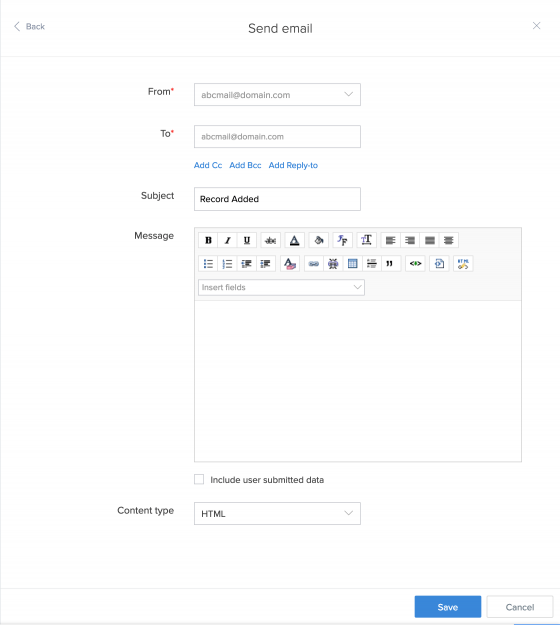
This is the email notification workflow, where you fill in fields with the user’s email address, and write your own customized message to notify your admin and drivers of the status of the deliveries and vehicles.
Step 5: Build a dashboard for the admin to view and analyze key metrics of the business
A dashboard is a one-stop shop to help you gauge the progress and overall activities of your business. Zoho Creator uses a feature called Pages to build these dashboards.
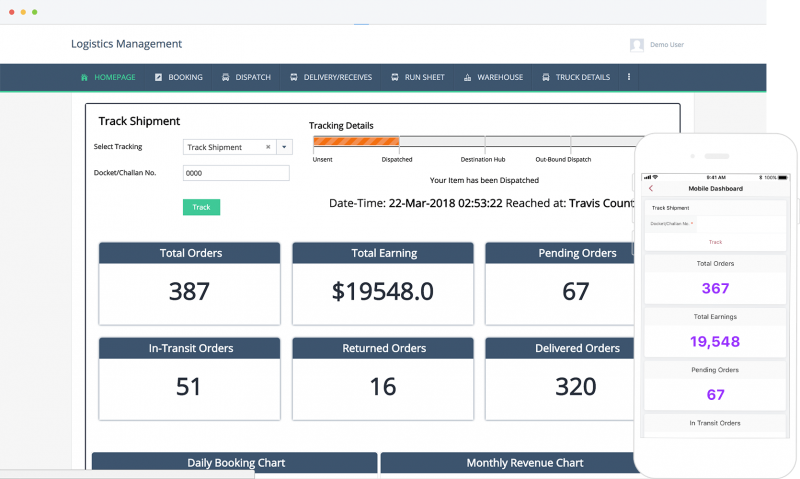 Similar to forms and reports, pages are also an element in your app. And you can use a drag-and-drop interface to design your page. Zoho Creator comes with premade blocks and layouts that you can choose and customize to fill in metrics that matter to you, like monthly revenue, live status of specific vehicles, overall tally of your fleet, and many more.
Similar to forms and reports, pages are also an element in your app. And you can use a drag-and-drop interface to design your page. Zoho Creator comes with premade blocks and layouts that you can choose and customize to fill in metrics that matter to you, like monthly revenue, live status of specific vehicles, overall tally of your fleet, and many more.
Here’s how the page builder looks. Ready-to-use panels make it far easier to go from an idea to a solid product you can interact with—and it’s less time-consuming to set up than HTML and CSS based dashboards.
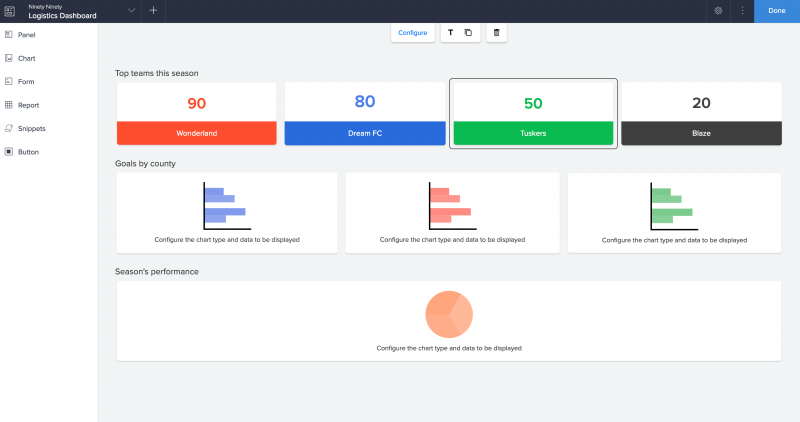 How cool is that, huh?
How cool is that, huh?
Bonus takeaway
We spoke earlier about the costs and delays involved in building apps for different platforms. With Zoho Creator, you don’t have to build mobile apps separately.
When you build your custom logistics app, Zoho Creator automatically generates a mobile app for iOS and Android devices. With no extra coding.
You can publish it in the app stores as is, or customize further with mobile features like swipe and tap gestures, offline access of forms, QR and barcodes for shipments, hiding backend forms and reports from drivers, and more.
Take a look back at the screenshots in this blog—most of them showcase these mobile features on the bottom right of the screen.
Ready to give Zoho Creator a spin?
We’ve put together a little step-by-step video to walk you through building your logistics management app. Check it out.
Of course, building a custom logistics app can be scary, and requires patience. But we think it’s still worth it to avoid the constant frustration of dealing with off-the-shelf software that doesn’t quite fit your business.
So go ahead and start decoding your business problems, today!
 Mathi Ganesh
Mathi GaneshData-driven digital marketer experienced in handling multiple SAAS products across different platforms. Experienced in strategizing, campaign management-analytics & training.

